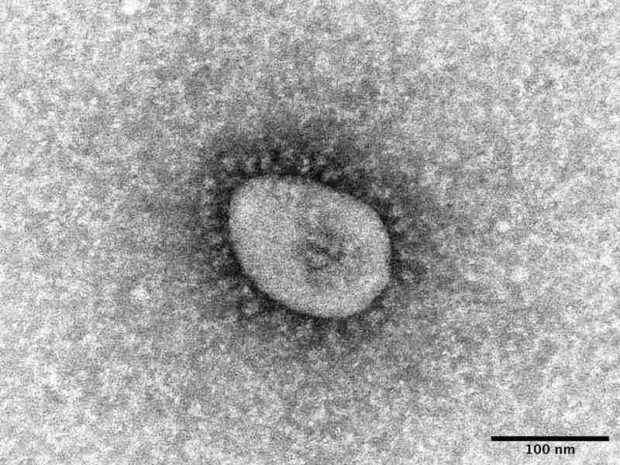Omicron strain behind China surge now in PH

An election micrograph of the Omicron variant of the novel coronavirus. Coutesy of the National Institute of Infectious Diseases via The Japan News/Asia News Network
MANILA, Philippines — A strain of the Omicron variant of COVID-19 which has been driving surges in China is now in the Philippines, according to the latest biosurveillance report of the Department of Health (DOH).
Citing that report, the DOH said on Friday that four cases of the Omicron subvariant BF.7 were detected in the country, based on the genome sequencing conducted on Dec. 14 and Dec. 15 by the Philippine Genome Center (PGC).
All four infected individuals are in Metro Manila, the department said in a statement. But it did not provide any further details.
Of the 133 samples sequenced by the PGC, 45 were found to carry XBC and 28 were found to have XBB — two Omicron recombinants, or recombined subvariants, detected in October.
The other samples yielded Omicron variants earlier found in the country, such as BA.2.3.20 and BA.5.
Article continues after this advertisementThe DOH said: “Available evidence for BF.7 does not suggest any differences in disease severity and/or clinical manifestations compared to the original Omicron variant.”
Article continues after this advertisementYet the new subvariant still had the “potential to be more transmissible” than the others, the DOH said.
Dominant strains
The World Health Organization (WHO) classifies BF.7 and BA.5.2 as sublineages of BA.5.
Both were reported to have been the dominant strains in China since last month. Authorities there have since relaxed restrictions which had prompted protests.
BF.7 is also spreading in the United States, India and the European countries of Belgium, Denmark, France and Germany. The European Centre for Disease Prevention and Control has classified BF.7 as a “variant under monitoring”—two levels below the highest category of variant of concern—because of its global presence.
The DOH said the new strain would “remain classified under Omicron until sufficient evidence arises showing that the virus characteristics are significantly different from Omicron.”
Amid the confirmation of the presence of BF.7, a health expert said there was still no “rush” to restrict arrivals from China.
“At this point in time, that can be considered, but maybe we should first look at the real situation in China. We should not rush in terms of border control,” Dr. Rontgene Solante said at Friday’s Laging Handa briefing.
‘Border control’
“[B]ecause we don’t have a very accurate information,… we need to observe further. We need to study if we need to do a border control,” he said.
If China declares “a big wave of this COVID infection,” the Philippines won’t be the only country affected, Solante pointed out.
“It will have a global implication … because China is a big country with a very big place in the economic arena,” he said.
Otherwise, Solante said the COVID-19 situation here is “more stable” now.
“If there will be [an] uptick of cases, I think this will not be more than 3,000 or 5,000,” he said.
‘Plateau’
The DOH noted as well that infections remained on a “plateau.”
Hospitalizations due to the coronavirus, including those in emergency rooms, remained manageable at 10.57 percent, unlike the 21.73 percent recorded in December last year, the DOH said.
The country’s daily average cases from Dec. 16 to Dec. 22 were at 973, although the DOH said that figure was 5 percent higher than the average in the previous week.
In Metro Manila, daily infections fell by about 10 percent to 404 on Tuesday from 447 last week, according to the OCTA research group, which also said there was a slight drop in the capital region’s positivity rate to 13.1 percent this week from 14.5 percent a week ago.
But with the increase in mobility this holiday season, the DOH said it expects the daily caseload to peak at 4,114 and severe and critical admissions to reach 2,252 by January.
As of Thursday, there were 1,031 new cases in the agency’s COVID-19 tracker.
“The DOH reiterates the need to put more emphasis on other factors, such as wearing of best-fitting face masks, isolating when sick, doubling-up protection via vaccines and boosters, and ensuring good airflow because these are the measures that we can address and control, rather than focusing on the presence of a transmissible variant,” the department said.